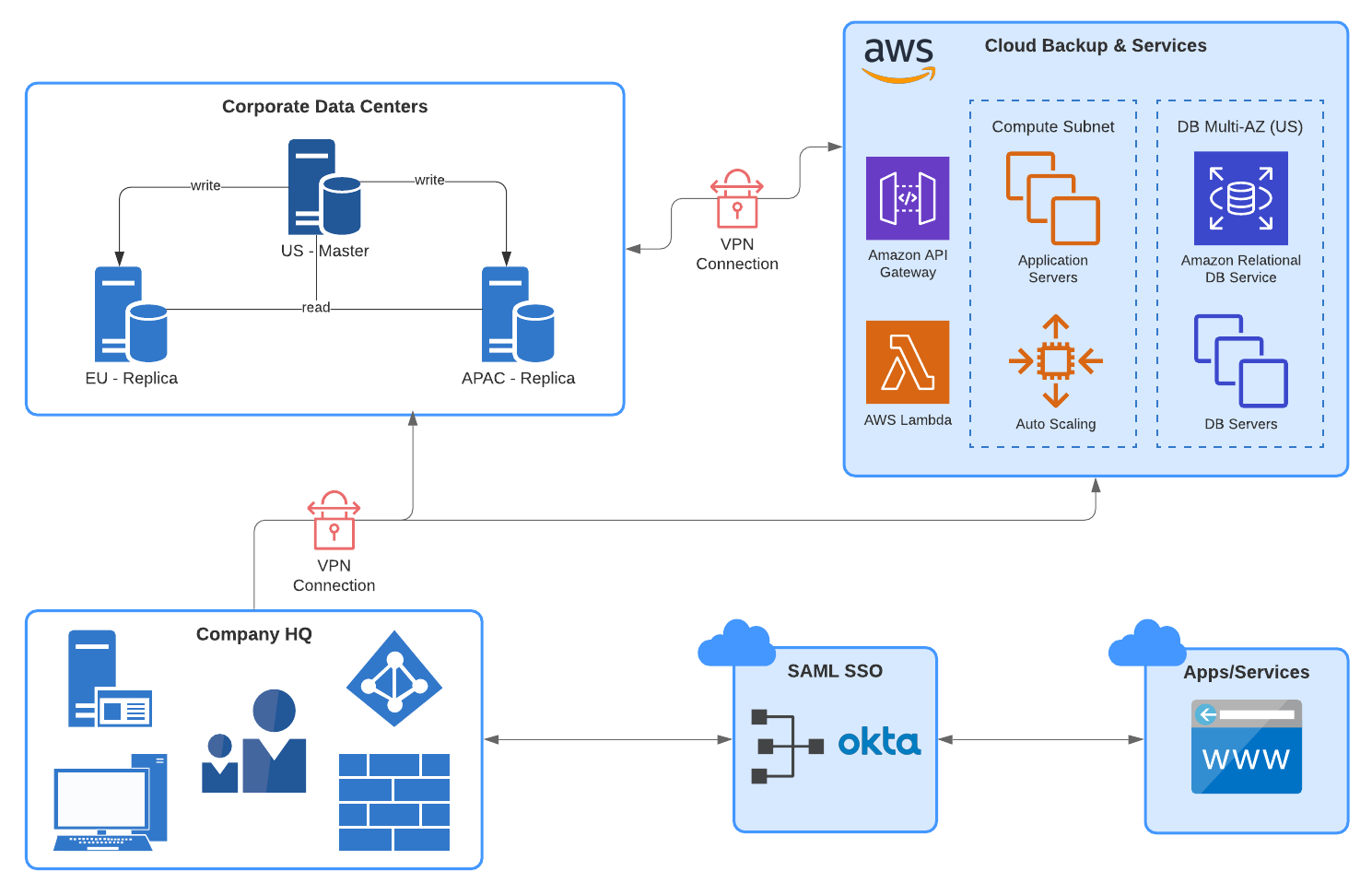
Digital improvement vs. digital transformation
Lucid Content
Reading time: about 7 min
Digital transformation has been the darling of the tech industry for years. Now, with the rise of data analytics, cloud and edge computing, and AI and machine learning, the business landscape—and its possibilities—is evolving faster than ever.
Yet, while it’s true that major technological advances are unlocking new business and operational potential, not every business can or should invest in full digital transformation.
Instead, these new technological advancements and tools offer increasing opportunities for organizations to focus on smaller-scale digital improvements and technological modernization that can pay big dividends in productivity, user experience, and competitiveness.
How technology serves your mission and vision for your organization can vary tremendously. Fortunately, technological modernization doesn’t necessarily mean abandoning everything you already have and already know. It may not even require a full, radical transformation of your business.
By understanding what your organization really needs and how technology can support your goals, you’ll be in a better position to chart an effective digital modernization or transformation.
Differences between digital transformation and digital improvement
“As part of a digital transformation or a digital improvement, a lot of the time people will assume that their applications and the software they already have internally won’t meet their needs,” says David Torgerson, senior director of engineering at Lucid. “The reality is probably not that black and white. It’s not that extreme.”
Digital improvement and digital transformation each have a different focus:
When you improve technology, you’re upgrading, but when you transform your technology, you’re revamping processes and rethinking how you work.
Digital transformation doesn’t bring new technology into your previous workflows, techniques, and strategies. Instead, by embracing digital transformation, your business finds a new methodology with technology as the impetus.
In other words, digital transformation is a more radical step than digital improvement. As such, digitally transforming your organization dramatically and fundamentally changes your company and can impact every department.
Digital improvement focuses on modernizing your existing operations with new technology. This can include upgrading devices and software, introducing new solutions to your tech stack, and integrating new or more efficient technology into your existing processes.
Examples of digital modernization
Digital modernization is usually about catching up with industry standards, such as onboarding new technology. Generally, these changes are significant but do not substantially alter the form and function of your business. After implementation, your organization operates more efficiently, but your underlying business operations and processes stay basically the same.
Your IT modernization strategy could include:

- Choosing technology to address a specific, isolated problem: For example, say your company would like to switch to fiber internet service. Changing your internet service may reduce costs and improve speed and efficiency, but before and after, your procedures and workflows stay consistent.
- Migrating to the cloud: By moving your data and applications from legacy infrastructure to a cloud provider, you could save on infrastructure and computational resources. Keep in mind that the size of your company, the industry you’re in, and the product you offer can impact the complexity of your migration—cloud migration could be considered a full digital transformation rather than modernization.
- Upgrading and updating to better applications: For example, your company may adopt an ERP that uses real-time analytics to perform work more efficiently and better connect important tools.
In each of these examples, newer technologies replace legacy systems and infrastructure. Workplace culture, workflows, and habits probably stay about the same, but your business gains added value.
Examples of digital transformation
If your organization’s processes and culture needs more of an overhaul, digital transformation is necessary. Transformative adjustments prepare your company for future growth and changes in your business environment. Examples include:
- Implementing breakthrough technologies: Some technological advances bring about transformation on their own. Using biometric devices in security screening instead of visually checking identification, for instance, means creating processes and a new culture around their use.
- Making your workforce fully remote: Transitioning to remote work has major implications for how businesses operate. It requires changes in workplace culture and workflows if your organization was previously working onsite.
The scale is much greater with digital transformation, and the stakes are generally higher. You don’t want to embark on digital transformation unless it’s absolutely necessary, because you’ll also be substantially changing culture and processes.
It’s possible you�’re taking on a digital transformation strategy when a technological modernization strategy is what your organization is actually looking for.
How to know which is right for you
When you evaluate your company’s needs and goals, you’ll see which approach is best right now. And remember—digital modernization and transformation can both be great experiences for your business. Not every challenge requires massive action. Full-scale transformation does not always deliver enough additional value.
Look at your workflows
Digital modernization renews existing processes but doesn’t always replace them completely. That said, sometimes processes are holding you back, according to Torgerson. “I’ve also seen people take a sub-par process, decide they want to implement it and buy an automation tool to implement the said subpar process, when in reality, it’s the process that needs to change, and there will only need to be minor adjustments.”
Consider competitiveness
Think about your motivation. Why are you undergoing the transformation or modernization? Technological change is necessary to stay competitive, but transformation often goes beyond boosting competitiveness.
Review the data
“Be results-driven! Data-driven decisions with a focus on results are going to clearly identify when those triggers make sense,” Torgerson notes.
“For example, continuous deployment/continuous integration (CI/CD) and digital transformation/digital improvement are buzzwords, and it's important to identify them as methods to a result.”
Keep UX in focus
If you’re always thinking about user experience and how to deliver the best results for your customers and your team members, you’ll find the right technological balance. Torgerson adds:
“At Lucid, we want to be able to get features to end users faster, but that’s not our only primary goal. If our only goal was to deliver stuff as fast as we could, we could deliver really crappy software all day long and really fast. Our actual goal is to get high-quality code to our end-users faster.”
Prepare for the appropriate level of digital improvement or transformation in your organization, and you’ll be in a better position to get the most value out of your technological investment.
How to prepare for digital improvement
To start, find where your organization needs change. For instance, if you’re at a point where you can’t go on in your existing processes without adopting new technologies or making serious adaptations.
“Some software is not going to meet the bar,” Torgerson adds. But that’s okay. “After you’ve identified the pain points in the process and after you have the result-driven goal, at that point, it will probably become very clear where you need to start ripping and replacing.”
In formulating your plan to transform or modernize your cloud use, you’ll need an accurate picture of your organization’s cloud infrastructure. Lucidchart Cloud Insights allows you to visualize your entire cloud infrastructure and drill down into up-to-date information to inform your IT modernization strategy.
Pacing digital change in your organization
Although your organization may ultimately need significant technological change, don’t undertake massive changes for the sake of making changes. Many companies make the mistake of embarking on digital transformation when digital modernization would be more than enough to achieve organizational goals.
While you certainly can embark on digital change first and course-correct later, Torgerson notes that successfully transforming or modernizing your organization requires a careful review of your end goals. Understanding what level of change is necessary enables you to find the right technology for your vision.
“What really helps decide or determine if a software you already have will still work throughout digital transformation is by having an end-goal in mind, having a vision, having a flag on a hill you’re marching toward.”

Learn what you need to develop a winning digital transformation strategy and set your organization ahead of the rest.
Learn moreAbout Lucidchart
Lucidchart, a cloud-based intelligent diagramming application, is a core component of Lucid Software's Visual Collaboration Suite. This intuitive, cloud-based solution empowers teams to collaborate in real-time to build flowcharts, mockups, UML diagrams, customer journey maps, and more. Lucidchart propels teams forward to build the future faster. Lucid is proud to serve top businesses around the world, including customers such as Google, GE, and NBC Universal, and 99% of the Fortune 500. Lucid partners with industry leaders, including Google, Atlassian, and Microsoft. Since its founding, Lucid has received numerous awards for its products, business, and workplace culture. For more information, visit lucidchart.com.
Related articles
Cloud migration strategies: The 6 Rs of cloud migration
In this article, we’ll discuss a model of cloud migration strategies known as the 6 Rs.
Developing a digital transformation strategy for the future
In today’s fast-paced market, develop your digital transformation strategy to better prepare your company for the future.
What is digital transformation?
One might consider digital transformation to be the industrial revolution of our era. Let’s take a look at what digital transformation means and why businesses are committed to making the shift.
